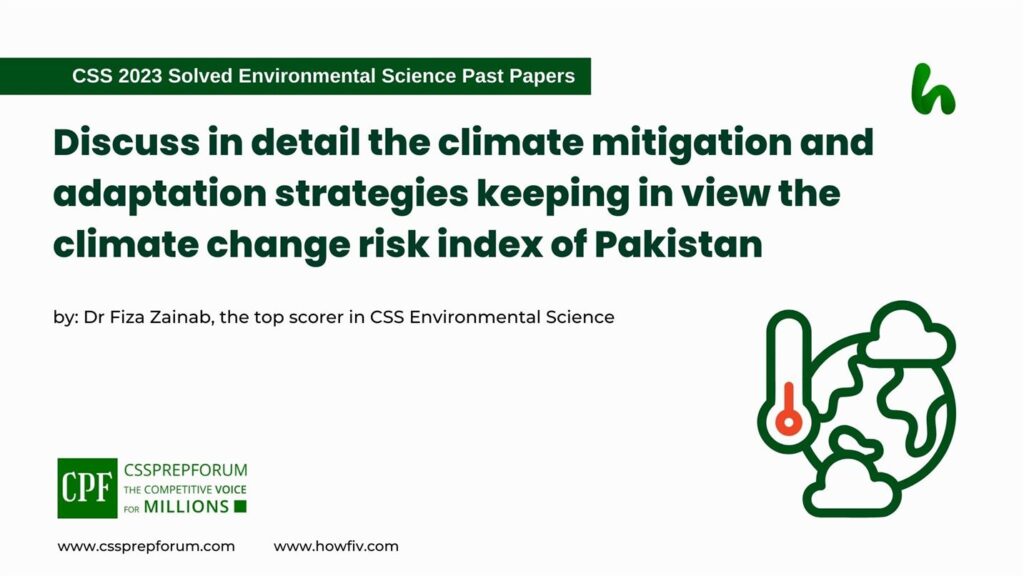CSS Solved Environmental Science Past Papers | Discuss in detail the climate mitigation and adaptation strategies keeping in view the climate change risk index of Pakistan.
The following question of Environmental Science is attempted on the same pattern, taught by Sir to his students, scoring the highest marks in compulsory subjects for years. This solved past paper question is uploaded to help aspirants understand how to crack a topic or question, how to write relevantly, what coherence is, and how to include and connect ideas, opinions, and suggestions to score the maximum.

Question Breakdown
The question asks to discuss climate mitigation and adaptation strategies for Pakistan while taking into account the country’s climate change risk index. You must start by introducing the topic and explaining why these strategies are important for Pakistan. You must include the overview of climate change risk index of Pakistan and outline the mitigation and adaptation strategies that could be implemented. You are also supposed to add different flow charts and mind maps to grab the attention of examiner. Conclude the question by emphasizing the importance of taking action to address the impact of climate change and acknowledging the potential challenges and need for international cooperation.
Outline
1- Introduction
2- Climate change risk index of Pakistan
3- Overview of climate change impacts in Pakistan
4- Climate mitigation strategies for Pakistan
- ✓Energy efficiency measures
- ✓Renewable energy expansion
- ✓Green infrastructure strategies
- ✓Land use and forestry strategies
5- Climate adaptation strategies for Pakistan
- ✓Disaster risk reduction and management
- ✓Climate-resilient water management strategies
- ✓Agriculture and food security strategies
- ✓Social safety nets
6-Comparative analysis of effectiveness of climate mitigation and adaptation strategies
7-Identifcation of available opportunities and challenges faced by Pakistan in implementation of mitigation and adaptation strategies
- ✓Opportunities
- ✓Challenges
8-Conclusion
Answer to the Question
Introduction
Pakistan is one of the countries that are most vulnerable to the impacts of climate change. According to the Global Climate Risk Index 2021, Pakistan is ranked 8th in terms of climate change risks, indicating that the country is facing severe and frequent climate-related hazards such as floods, droughts, heat waves, and storms. Therefore, Pakistan must implement effective climate mitigation and adaptation strategies to reduce its vulnerability and increase its resilience to the adverse impacts of climate change. Mitigation strategies include promoting renewable energy, improving energy efficiency, and reforestation. On the other hand, adaptation strategies include disaster risk reduction, water management, and agricultural adaptation. These strategies should be tailored to the country’s specific climate-related challenges and should prioritize the promotion of sustainable practices in all sectors. The success of these strategies will depend on effective implementation, stakeholder engagement, and the availability of financial resources.
Climate change risk index of Pakistan
According to the Global Climate Risk Index 2021, which was released by the German environmental think tank German watch, Pakistan ranks as the eighth most affected country in the world by climate change. The report analyzed data from 2000 to 2019, evaluating the degree to which countries have been affected by extreme weather events like floods, storms, heat waves, and droughts. Pakistan has been severely impacted by extreme weather events, particularly flooding, and droughts, which have caused significant harm to infrastructure, agriculture, and human settlements. The report emphasizes the need for Pakistan to take immediate action to mitigate the effects of climate change. Moreover, the report warns that the impacts of climate change are likely to exacerbate existing social and economic inequalities in Pakistan, particularly in rural areas, where people rely on agriculture and natural resources for their livelihoods. The report urges developed nations to take responsibility for their past emissions and provide assistance to vulnerable countries such as Pakistan in coping with the impacts of climate change.
Overview of climate change impacts in Pakistan
Pakistan is facing significant challenges from climate change due to its geography, large population, and dependence on agriculture. The impacts of climate change, such as extreme weather events, water scarcity, reduced agricultural productivity, melting glaciers, adverse health effects, and loss of biodiversity, are already experienced in the country. These impacts have resulted in severe economic losses, damage to infrastructure, and an increase in the frequency and intensity of these events. Furthermore, climate change has disproportionately affected vulnerable communities, aggravating existing social and economic inequalities. These impacts are evident across various sectors in Pakistan, and immediate action is necessary to mitigate the adverse effects and build resilience to future climate shocks.
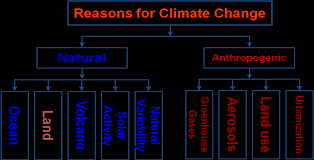
Climate mitigation strategies for Pakistan
“Mitigation – reducing climate change – involves reducing the flow of heat-trapping greenhouse gases into the atmosphere, either by reducing sources of these gases or enhancing the “sinks” that accumulate and store these gases”
United Nations Intergovernmental Panel on Climate Change
Mitigation measures can encompass a variety of strategies. For example, they may involve boosting the adoption of renewable energy sources, enhancing energy efficiency, curbing deforestation, increasing reforestation efforts, and promoting sustainable land use practices. Other strategies could entail creating and enforcing policies and regulations that limit emissions from industry and transportation, as well as investing in research and development of innovative, low-carbon technologies. Let’s discuss them one by one.
- ✓ Energy efficiency measures
Energy efficiency involves accomplishing the same task or outcome with less energy consumption. In the context of homes and buildings, energy-efficient measures result in reduced energy consumption for heating, cooling, and running appliances and electronics. Similarly, in manufacturing facilities, energy-efficient methods lead to lower energy usage for producing goods. Implementing energy efficiency measures is a simple and cost-effective approach to addressing climate change, lowering energy expenses for consumers, and boosting the competitiveness of U.S. enterprises. Furthermore, energy efficiency plays a crucial role in the decarbanization process, which is necessary to achieve net-zero carbon dioxide emissions.
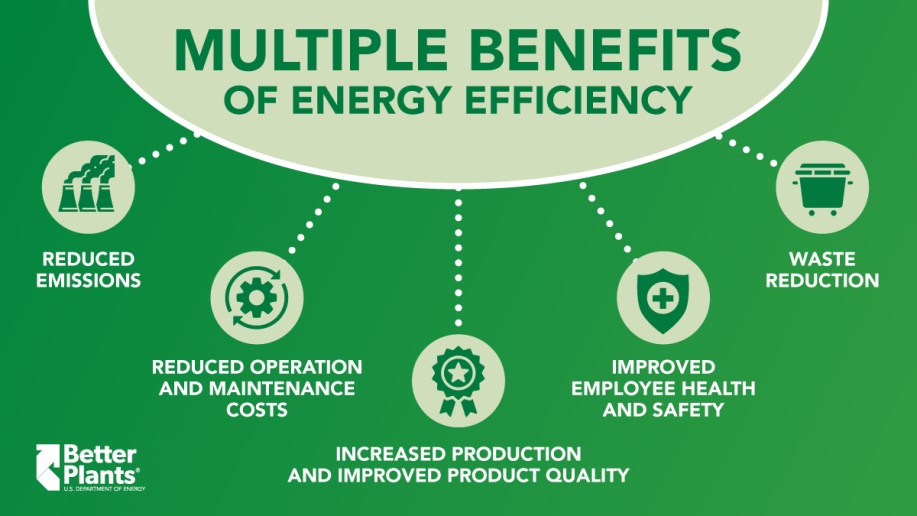
An example is The Office of Energy Efficiency and Renewable Energy (EERE) champions clean energy through its technical offices and programs that fund research and development and promote energy efficiency across all sectors of the U.S. economy.
- ✓ Renewable energy expansion
Renewable energy expansion refers to the development and growth of renewable energy sources like solar, wind, hydro, geothermal, and bioenergy to meet the world’s energy demands. This can be achieved through the development of new technologies, government policies and incentives, and consumer demand for clean energy. The expansion of renewable energy is crucial for reducing greenhouse gas emissions, improving energy security, and promoting sustainable economic development. Data from the Sustainable Development Policy Institute (SDPI) suggests that: “The share of renewable energy in Pakistan currently stands at 5%. The share of hydroelectric power generation in the energy mix stood at almost 25% (10,251MW) in April 2022”.Yet a lot of work is needed to be done in sector of renewable energy expansion, as the following diagram is showing
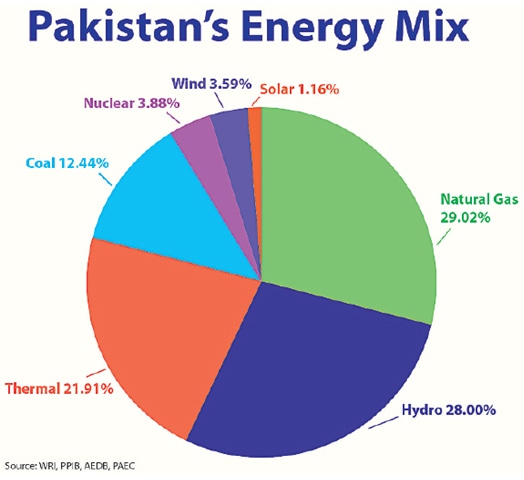
- ✓ Green infrastructure strategies
Pakistan faces a range of environmental challenges, including air pollution, water scarcity, and deforestation, among others. Green infrastructure strategies can play an important role in addressing these challenges and promoting sustainable development in the country. Green infrastructure strategies refer to the use of natural and nature-based solutions to address environmental challenges and improve the well-being of people and nature. These strategies include green roofs and walls, urban forests and parks, rain gardens and bioswales, natural shoreline stabilization, permeable pavement, and sustainable drainage systems. By implementing these strategies, cities and communities can become more sustainable, resilient, and livable.
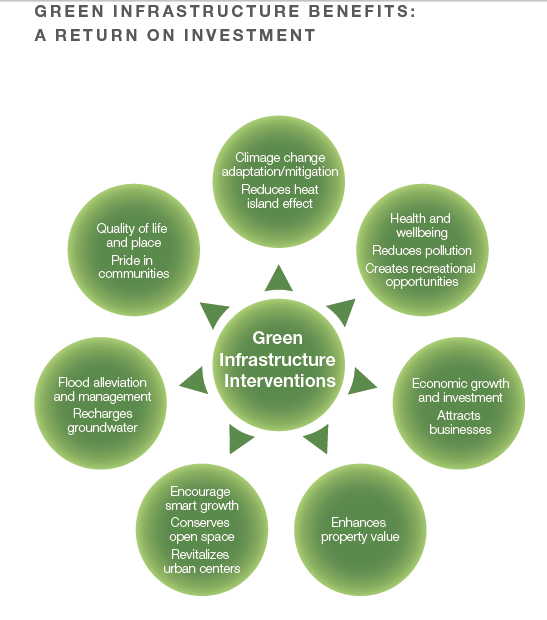
The World Health Organization (WHO) published a report titled “Urban Green Spaces and Health – A Review of Evidence” that provides evidence on the health benefits of green infrastructure. The report emphasizes that access to green spaces can improve mental health, reduce stress, and increase physical activity.
- ✓ Land use and forestry strategies
Land use and forestry strategies are approaches to address climate change and promote sustainable land use practices. These include afforestation and reforestation, forest conservation, agroforestry, sustainable forest management, urban forestry, and land use planning. These strategies aim to mitigate greenhouse gas emissions, improve soil quality, reduce erosion, protect natural resources, and build sustainable communities. Pakistan faces various environmental challenges, including deforestation, desertification, soil degradation, and water scarcity.

To address these challenges, several land use and forestry strategies are being implemented in the country. Pakistan’s government has launched a massive reforestation program called the “Ten Billion Tree Tsunami” project. Under this project, the government aims to plant ten billion trees across the country by 2023.
Climate adaptation strategies for Pakistan
Adaptation – adapting to life in a changing climate – involves adjusting to actual or expected future climate. The goal is to reduce our risks from the harmful effects of climate change. It also includes making the most of any potential beneficial opportunities associated with climate change.
United Nations Intergovernmental Panel on Climate Change
Adaptation strategies involve disaster risk reduction management, water management, agriculture and food security strategies and some other social safety measures. Let’s discuss them one by one.
- ✓ Disaster risk reduction and management
“Disaster risk management is the application of disaster risk reduction policies and strategies to prevent new disaster risk reduce existing disaster risk and manage residual risk, contributing to the strengthening of resilience and reduction of disaster losses.”
United Nations office for Disaster Risk Reduction
Pakistan is a country that faces multiple natural disasters, and to manage these risks, disaster risk management can be categorized into three types of actions: prospective, corrective, and compensatory. Community-based disaster risk management and local and indigenous peoples’ approaches are essential in this context. Disaster risk management plans should be tailored to each level of administrative responsibility and adapted to social and geographical circumstances, with a specified time frame, responsibilities for implementation, and sources of funding.
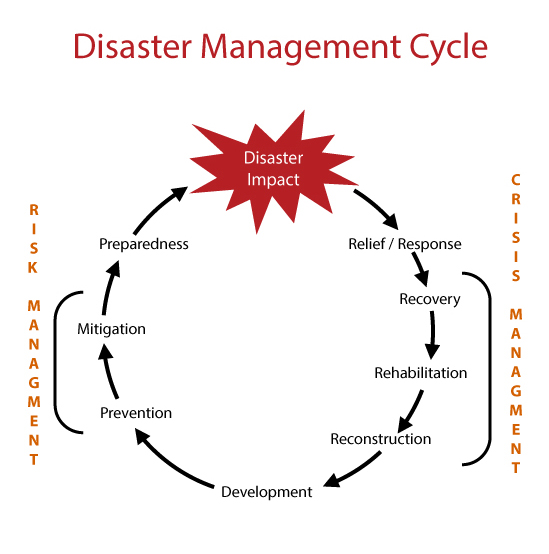
Above picture can also be mold according to the recent example of flood in Pakistan. By taking a comprehensive and coordinated approach to disaster risk management, Pakistan can reduce the impact of natural disasters and increase the resilience of its communities.
- ✓ Climate-resilient water management strategies
Pakistan is facing challenges related to water resources due to climate change, and to address this, it can implement climate-resilient water management strategies. These strategies include water conservation and efficiency measures, integrated water resources management, diversification of water sources, infrastructure upgrades, ecosystem-based approaches, community engagement and education, and early warning systems and emergency preparedness. By implementing these strategies, Pakistan can build resilience to climate change impacts and ensure sustainable and reliable water management.
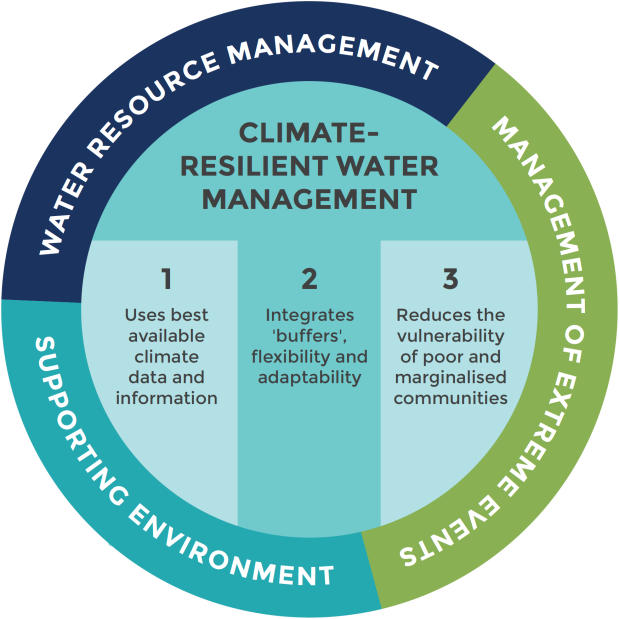
In this context, UNESCO organized a three-day conference before COP26 to raise awareness and build capacity around new approaches to assessing and addressing Climate-Resilient Water Management Approaches, including their vast potential within global climate policy and sustainable development agendas.
- ✓ Agriculture and food security strategies
In the 2022 Global Hunger Index, Pakistan ranks 99th out of the 121 countries. The report states that more than 25% of the population in Pakistan is undernourished, and around 40% of children under the age of five are stunted, indicating chronic malnutrition. To overcome this devastating situation, Pakistan has adopted a range of strategies to ensure food security through sustainable agriculture practices. These strategies include promoting sustainable farming practices, improving access to water resources, enhancing agricultural productivity, supporting smallholder farmers, promoting crop diversification, addressing post-harvest losses, and dealing with the impact of climate change on agriculture.
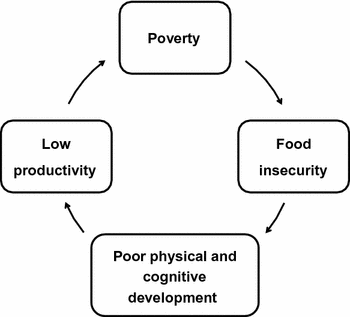
By implementing these strategies, Pakistan aims to improve agricultural productivity, reduce poverty and malnutrition, and achieve sustainable agricultural development. Nevertheless, there are several challenges such as water scarcity, soil degradation, and climate change that need to be tackled to ensure sustainable agricultural development and food security in Pakistan.
- ✓ Social safety nets
According to the World Bank, Pakistan is among the top 10 countries most affected by climate change, with recurrent floods, droughts, and extreme heat events. To address these challenges, social safety nets can provide financial support to vulnerable populations, including cash transfers and food assistance, to help them meet their basic needs and access essential goods and services. One example is the Ehsaas Emergency Cash Program, launched in response to the COVID-19 pandemic, which provides financial assistance to low-income families, including those affected by climate-related disasters. Access to healthcare services is also critical, particularly for those who are at greater risk of health impacts from climate change, such as heat stress and waterborne diseases. In addition, education is essential for building resilience and preparing communities for the impacts of climate change.

Comparative analysis of the effectiveness of climate mitigation and adaptation strategies
Climate change is a complex and urgent issue that requires both mitigation and adaptation strategies. Mitigation strategies aim to reduce greenhouse gas emissions and prevent the worst impacts of climate change, while adaptation strategies focus on building resilience to the impacts that are already happening. Mitigation strategies tend to be more effective in the long term, as they aim to address the root causes of climate change. However, mitigation strategies can take time to implement and may require significant investments in infrastructure and technology. Adaptation strategies tend to be more immediate and can help to reduce the impacts of climate change that are already happening. However, adaptation strategies may not be enough to address the worst impacts of climate change, and they may require ongoing investments and maintenance.

A comprehensive approach that combines both strategies is essential to effectively address the challenges of climate change and ensure a sustainable future.
Identification of available opportunities and challenges faced by Pakistan in implementation of mitigation and adaptation strategies
Pakistan, like many other developing countries, faces numerous challenges in implementing mitigation and adaptation strategies to address the impacts of climate change. At the same time, there are several opportunities available that can help the country to cope with the challenges. Below are some of the opportunities and challenges faced by Pakistan in implementing climate change strategies:
- ✓ Opportunities
Pakistan has the potential for renewable energy development, specifically in solar and wind power, due to its geographic location with abundant sunshine and wind. Agriculture, being the backbone of Pakistan’s economy, is highly vulnerable to climate change. However, new technologies and practices can be introduced to increase resilience and productivity in the sector. Additionally, Pakistan can access funding and technical support from international organizations such as the Green Climate Fund, the Global Environment Facility, and the Adaptation Fund to implement climate change mitigation and adaptation strategies.
- ✓ Challenges
Pakistan faces multiple challenges in implementing climate change strategies, including a lack of awareness and understanding among the general public, policymakers, and decision-makers. Additionally, limited financial resources hinder the country’s ability to invest in low-carbon development and climate adaptation measures. Severe water scarcity issues due to geography and climate change exacerbate the problem of ensuring adequate water supply for agriculture, industry, and households. Furthermore, Pakistan’s infrastructure is vulnerable to climate change impacts, such as flooding and extreme weather events, and requires investment in resilient infrastructure.
Conclusion
In conclusion, Pakistan is facing severe climate change risks and needs to implement both mitigation and adaptation strategies to address them. Mitigation measures such as shifting to renewable energy sources and reducing greenhouse gas emissions can help reduce the impact of climate change. At the same time, adaptation measures such as water conservation, drought-resistant crops, and disaster risk reduction can help Pakistan cope with the existing and anticipated impacts of climate change. Pakistan needs to prioritize and implement a range of strategies that are both cost-effective and sustainable to effectively manage the risks posed by climate change.

CSS Solved Past Papers’ Essays
Looking for the last ten years of CSS and PMS Solved Essays and want to know how Sir Kazim’s students write and score the highest marks in the essays’ papers? Then, click on the CSS Solved Essays to start reading them.
CSS Solved Essays

CSS Solved General Science & Ability Past Papers
Want to read the last ten years’ General Science & Ability Solved Past Papers to learn how to attempt them and to score high? Let’s click on the link below to read them all freely. All past papers have been solved by Miss Iqra Ali & Dr Nishat Baloch, Pakistan’s top CSS GSA coach having the highest score of their students.
General Science & Ability Solved Past Papers
CSS Solved Pakistan Affairs Past Papers
Want to read CSS Pakistan Affairs Solved Past Papers and learn how to attempt them to score high? Let’s click on the link below to read them all freely. All past papers’ questions have been attempted by Sir Kazim’s students, who scored the highest in the subject.
CSS Solved Pakistan Affairs
CSS Solved International Relations’ Past Papers
Have you opted for International Relations in the CSS examination and want to score above 150? Then, click on the CSS Solved International Relations’ Past Papers by Miss Abeera Fatima, the top IR scorer and the best IR coach in Pakistan.
CSS Solved International Relations Past Papers
Articles Might Interest You!
The following are some of the most important articles for CSS and PMS aspirants. Click on any to start reading.

